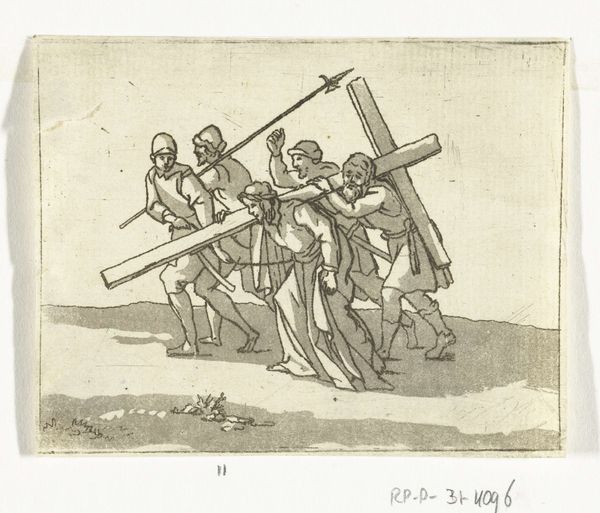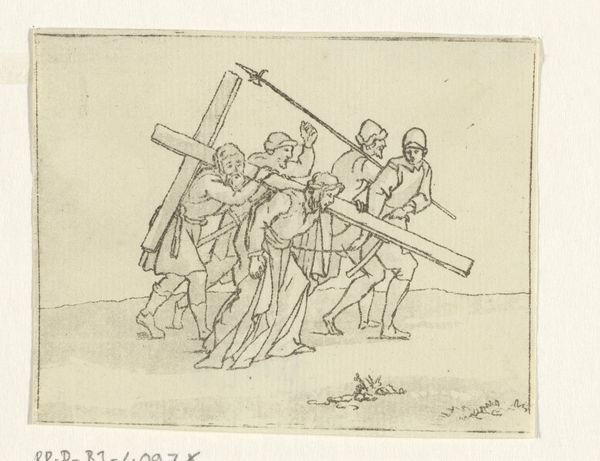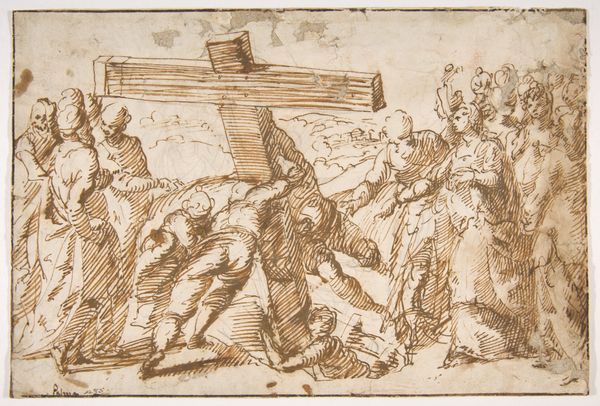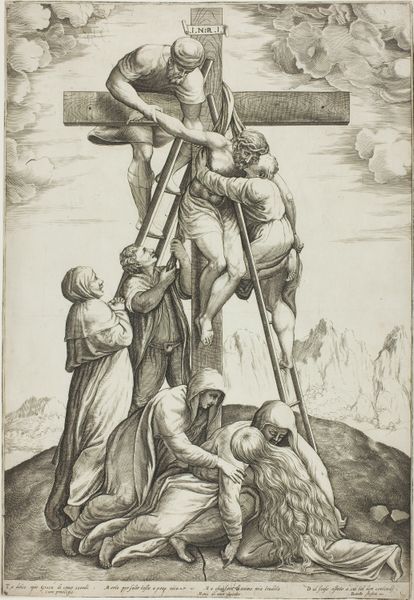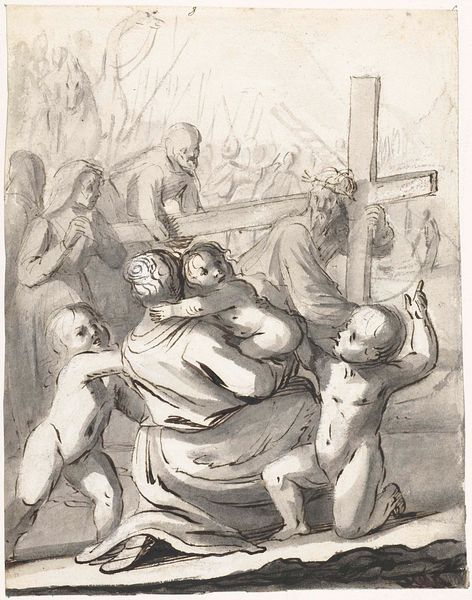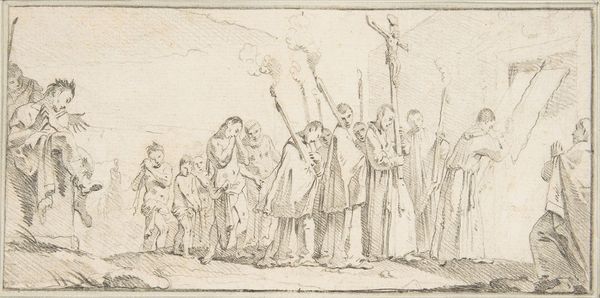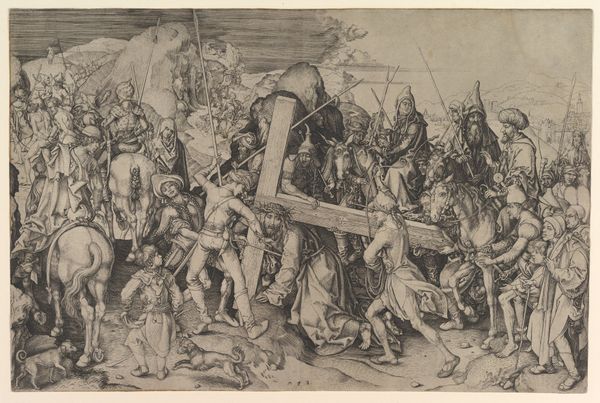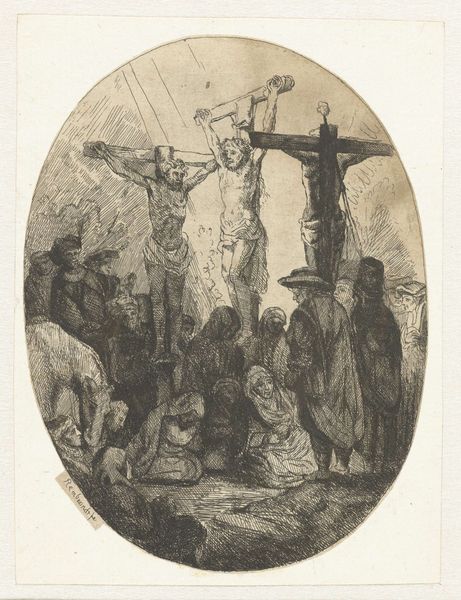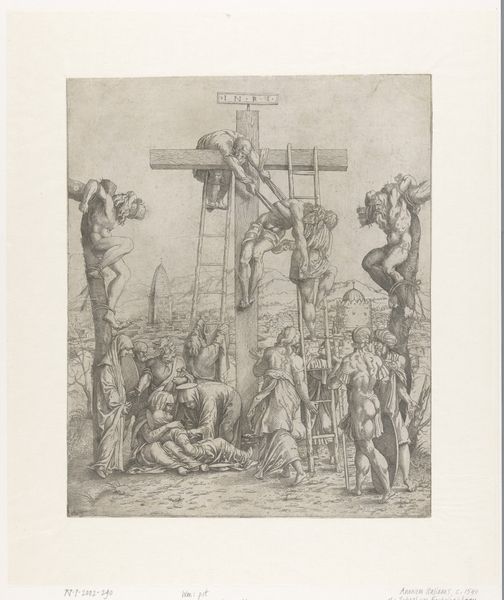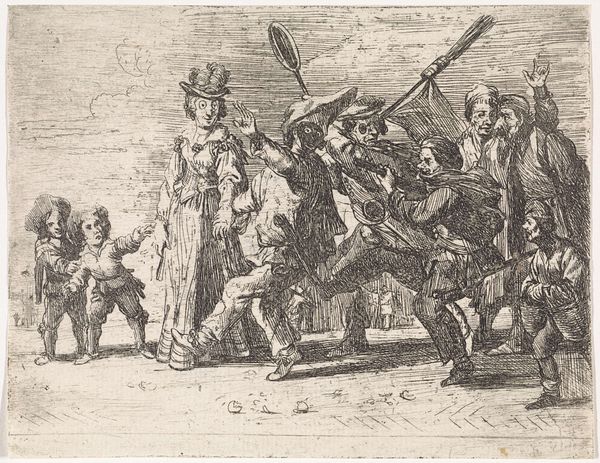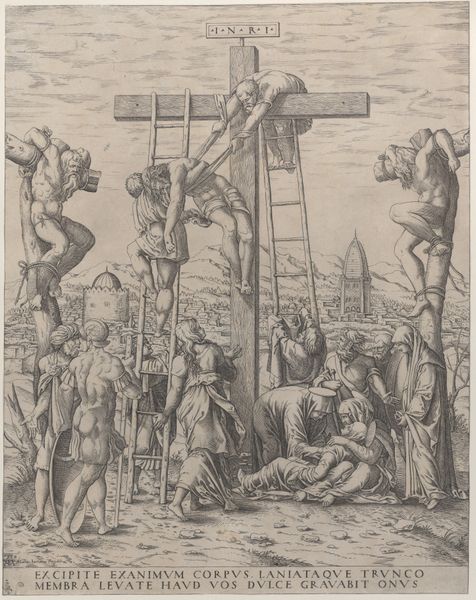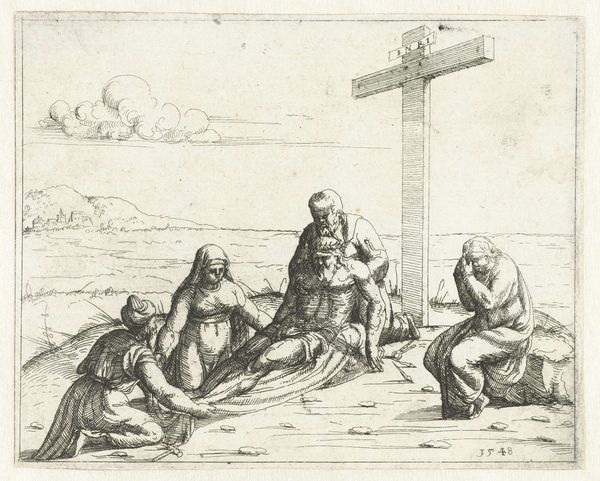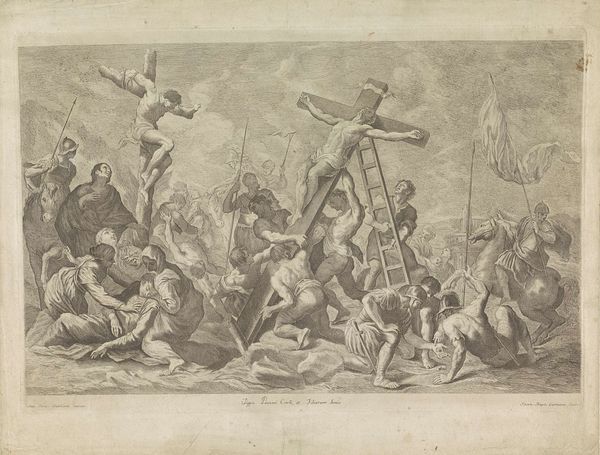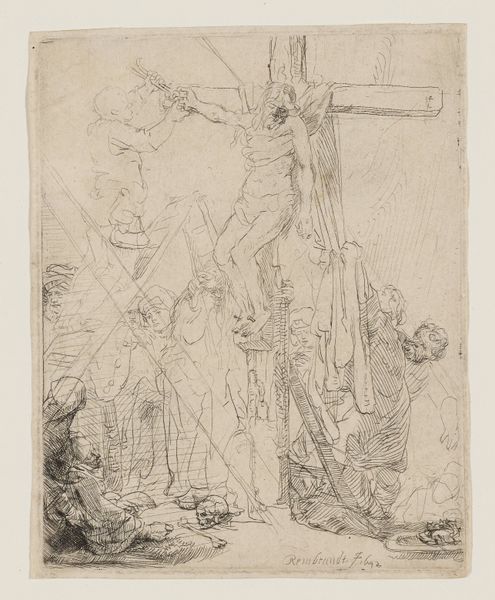
Dimensions: height 73 mm, width 90 mm
Copyright: Rijks Museum: Open Domain
Curator: Here we have Anthonie van den Bos's etching, "Kruisdraging," made sometime between 1800 and 1838. It's currently held in the Rijksmuseum collection. Editor: It feels almost minimalist, doesn’t it? Stripped down. You can feel the weight and the struggle—and you sense how etched lines have produced such rawness of emotion. Curator: Absolutely. The artist chooses a stark depiction of Christ carrying the cross. It's a classic narrative theme rendered in the Baroque style, but what interests me is how van den Bos, working in this period, utilizes the historical weight of this imagery. This work resonates within specific religious and social contexts, prompting reflection on suffering, sacrifice, and the social structures enforcing such cruelty. Editor: What intrigues me is the physical act of creation. Etching, of course, is labor-intensive, isn't it? Acid bites into the metal, layer upon layer to form an image; here it emphasizes texture and tone. In contrast with the weight and the process involved, there is an inexpensive reproduction that creates wide access to powerful narratives. Curator: Precisely. The print medium facilitates the circulation of ideas and imagery. Works such as this reached broader audiences than paintings would. Dissemination becomes power. Van den Bos places his work in a dialogue, consciously or not, with earlier representations of Christ’s Passion and speaks directly to the changing attitudes to piety and power in society at this time. Editor: And there's the landscape too, just a desolate stretch of land indicated by minimal hatching. The print process almost creates an artifact, too – what are its uses, its ownership. Are these details more to the fore for being etching rather than oil paint? Curator: Perhaps the barren landscape emphasizes the isolation and ordeal; what this artwork represents is a powerful commentary within the historical context, especially during the turbulent socio-political environment of the early 19th century. It shows us how van den Bos wanted this to sit within a historical landscape. Editor: Reflecting on it all, I see a convergence: between the material realities of creation and its broader circulation as something so expressive, this relatively simple scene speaks volumes about how meaning is made and remade across time and context. Curator: I agree entirely. This simple print sparks conversation. I'm compelled to think about art’s position within networks of power, influencing opinions while recording history and provoking difficult and crucial social debate.
Comments
No comments
Be the first to comment and join the conversation on the ultimate creative platform.
